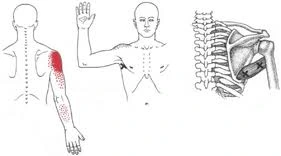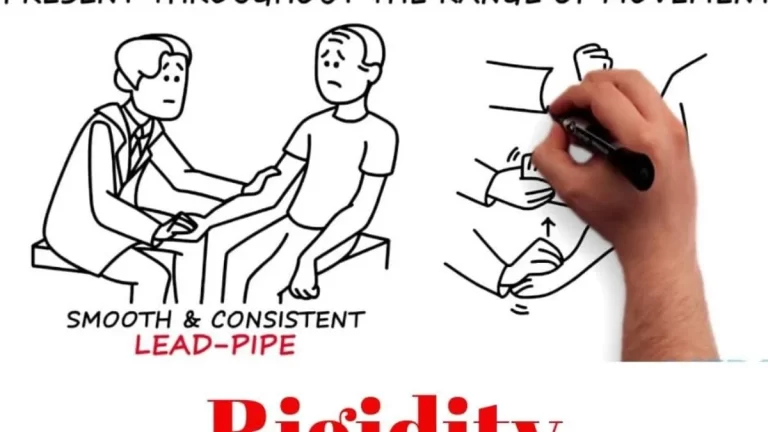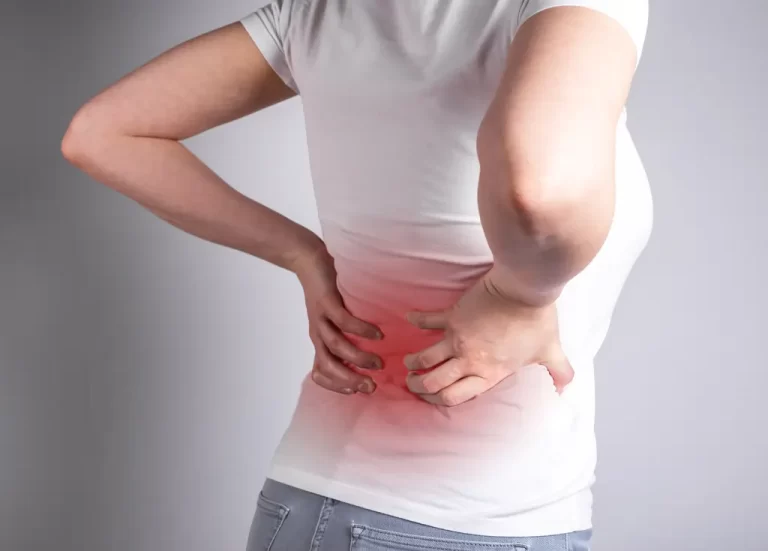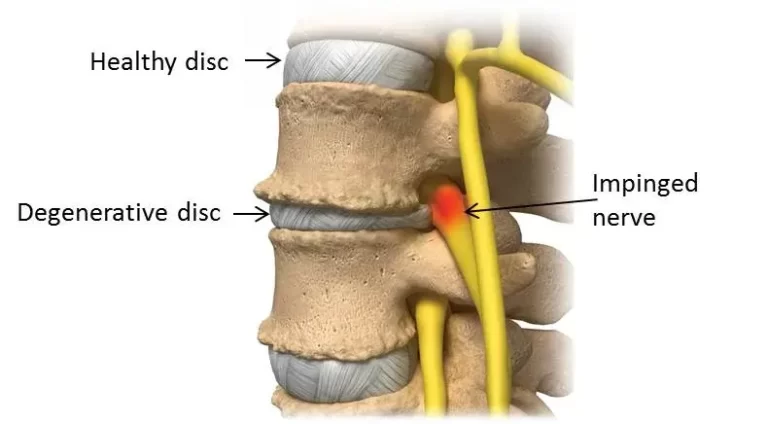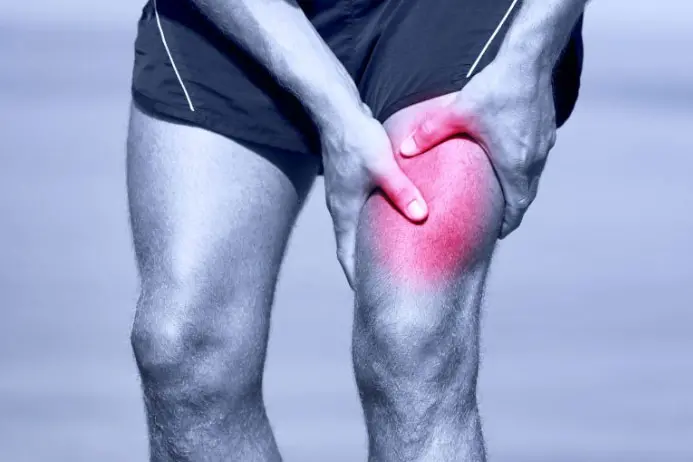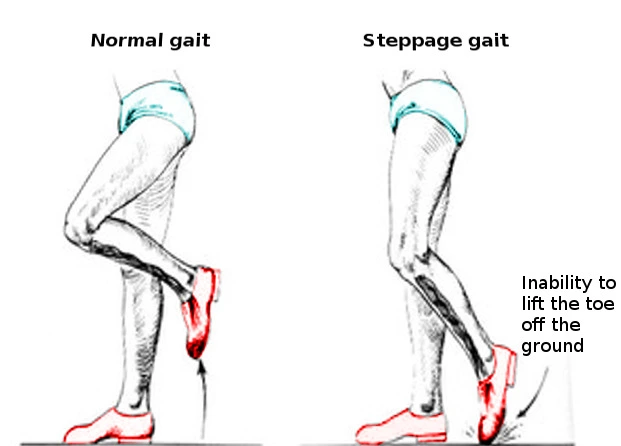Teres Major Muscle Pain
Teres Major Muscle Pain occurs when the teres major, a small but powerful muscle in the upper back, becomes strained or overworked. This muscle plays a key role in shoulder movement, including adduction, internal rotation, and extension.
Pain in this area may result from overuse, poor posture, or repetitive activities like lifting or throwing. Symptoms often include aching, stiffness, and restricted shoulder mobility. Proper stretching, strengthening, and posture correction can help alleviate discomfort and prevent future issues.
What is a Teres Major Muscle Pain?
It plays a crucial role in arm movement, particularly in internal rotation, adduction, and extension of the shoulder joint. Pain in the teres major muscle can result from overuse, poor posture, or strain due to repetitive activities such as weightlifting, swimming, or throwing motions. This type of pain may present as localized pain in the back of the shoulder, restricted movement, or even radiating sensations down the arm. Understanding the causes, symptoms, and treatment options for teres major muscle pain is essential for effective management and recovery.
The shoulder’s stability and mobility team includes the teres major muscle, which runs down the shoulder blade. It facilitates pulling, throwing, and lifting motions by joining the upper arm to the lower edge of your shoulder blade. This muscle aids in the execution of strong upper body movements, whether you’re a swimmer, weightlifter, or recreational athlete. It is prone to strain, though, if overworked or stretched incorrectly.
You may be experiencing severe shoulder pain if it has been acting up. This muscle rupture is regarded as uncommon and isn’t often covered in the literature. Your teres major may be the cause of your shoulder ache if it is in the back!
The teres major is working hard for you if you engage in repetitive overhead motions or play sports like baseball or football. Now let’s get into the important details concerning the teres major and what to do if you have pain.
Anatomy of Teres Major Muscle Pain?
On the underside of your scapula, your teres major muscle slides into a groove on your humerus. There is a teres minor, in case you were wondering, and it is directly below the teres major.
Together with the latissimus doors and subscapularis, the teres major forms the rear portion of the axilla (armpit) and creates crucial connections to the deltoid.
Function
- “To extend, medially rotate, and adduct the humerus” was the stated purpose of the teres major. These functions are not unique to this muscle. Additionally, the latissimus dorsi facilitates the humerus’s adduction and medial rotation.
- Is your arm moving away from your body or above it? You’re in good hands with your teres major.
Any motions that include internal rotation, adduction, and extension You’re succeeding with your teres major! - Injuries seldom damage just the teres major since the latisimmus dorsi and teres major work as a single muscle.
Causes of Teres Major Muscle Pain?
As mentioned in past posts on the QL Blawg, you can discover that there are common root causes of muscular pain. Although professional athletes aren’t the only ones who can sustain this kind of injury, there are a few things to be mindful of:
- Poor posture
- injury or trauma (automotive accidents)
- Repeated motions, such as throwing and overhead movements
- Insufficient warm-up
- Baseball pitchers and others who perform repetitive tasks like cutting wood are among the professions that are susceptible to teres major pain. Beware of lumberjacks.
Symptoms of Teres Major Muscle Pain?
Arm movement is influenced by the teres major muscle, which is situated in the upper back, close to the shoulder blade. Overuse, tension, or injury can cause pain in this muscle. The following are typical signs of teres major muscle pain:
- Upper back or shoulder ache: a dull, aching pain that occasionally spreads to the upper arm and is located close to the lower shoulder blade.
- Pain During Arm Raising or Rotation: Pain during arm lifting, reaching upwards, or inward rotation.
- Tightness and Tenderness: The teres major region may feel painful to the touch.
- Reduced Shoulder Mobility: The arm becomes stiff and difficult to move in specific directions.
- Pain While Sleeping on the Affected Side: The affected side causes more pain when sleeping down.
- Pain During Physical Activity: Weightlifting, swimming, and throwing are among activities that might exacerbate pain.
Diagnosis of Teres Major Muscle Pain:
- For a diagnosis, a medical professional’s thorough examination is an excellent place to start. In addition to determining which muscle is causing your pain, they can also recommend practical solutions that will help you fully recover.
- The most used imaging method is magnetic resonance imaging (MRI). An MRI can assist in differentiating between a tear’s major tear and a strain.
- To examine the area for bruises, ultrasonography may also be prescribed.
- You should obtain a professional evaluation if your pain doesn’t go away! They can be used to determine which muscle is impacted and to be sure that nothing more serious is causing the problem.
Treatment of Teres Major Muscle Pain:
I hope conservative techniques can readily treat your pain. If you haven’t visited a doctor yet, keep in mind the PRICE procedure!
- P – Protection
- R – Rest
- I – Ice
- C – Compression
- E – Elevation
This intervention is simple to perform at home, requires little additional equipment, and can be started immediately.
The goal of the elevation exercise should be to maintain a neutral posture for your arm and shoulder, without exerting any pressure.
Medication Options
Over-the-counter drugs can be used to treat muscular pain at first, but inflammation-induced damage will take time to heal. Before starting medicine, it’s crucial to confirm with your doctor that you are having muscle pain. Ideally, other therapies will be required if PRICE has not been able to alleviate your pain.
Trigger Point
You can use massage therapy or even acupuncture to relieve a knot or trigger point in your teres major. Given the placement of this muscle, your best option might be to contact a massage therapist. Look for a deep tissue massage or myofascial release specialist.
Physical Therapy of Teres Major Muscle Pain
Physical therapy may be required as part of your required treatment. To help you regain your strength and range of motion, a therapist can offer the right stretching and strengthening exercises.
Although it’s simple to start a stretching regimen at home, it can be challenging to determine which stretches and activities are safe to perform without making your pain worse. Resting if moving still hurts is a helpful tip to follow.
Exercise of Teres Major Muscle Pain
Face pulls
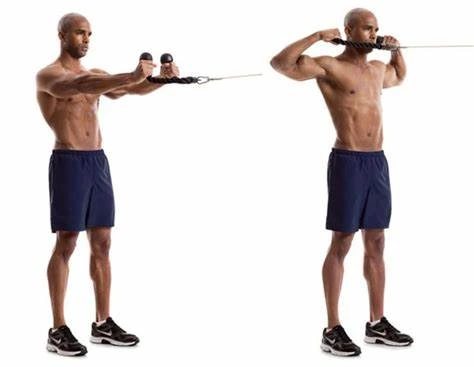
- For optimal effects, use a cable machine rope or resistance band.
- The cable machine rope should be adjusted to head height.
- Maintain a neutral grip on the rope while facing the machine and taking a step back with your feet shoulder-width apart.
- Pull the rope toward your face until your hands are close to your ears by extending your arms, raising your chest, and tightening your core.
- Take a moment, squeeze your shoulder blades, and then gently return to the starting point. Do it again.
Single Arm Dumbbell Row
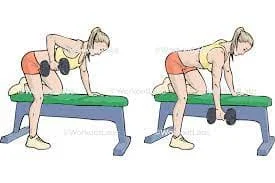
- Place one hand on a bench or sturdy surface for support while maintaining a neutral spine and a slightly slouched posture.
- Extend your arm straight down while holding a dumbbell in the other hand.
- Before initiating retraction, let your scapula stretch.
- Pull the dumbbell up to your hip while maintaining a tight body to contract your teres major and squeeze your shoulder blade.
- Return slowly and do it again.
- Reduce the weight if you find yourself pushing excessively to compensate.
- Change arms once you’ve performed the required amount of repetitions.
Band Pull Aparts
- Select the resistance band that you like most.
- Your feet should be shoulder-width apart.
- Lift the resistance band until it is shoulder-width apart.
- Spread your arms straight out in front of you and retract your shoulder blades while holding the resistance band.
- While keeping a tall chest and a firm core, extend both arms out to the sides.
- Pull the band till it touches your chest.
- Try to squeeze your shoulder blades together and hold for a moment.
- Allow the band to slowly revert to its starting position.
- Repeat as many times as you’d like.
Side-lying External Rotation
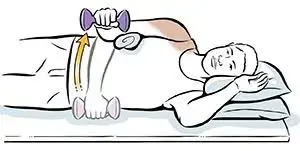
- For more support and easier rotation, place a cloth under your armpit.
- Keep your elbow pinned to your side as you slowly spin upward.
- Use a lighter weight at first, and if you have pain, reduce your speed or stop.
Vertical Rotation Exercise
- Throughout the exercise, retract your shoulder blades.
- Pull back rather than raise.
- Use a lighter weight to begin.
- Use this as a warm-up before working out to strengthen your shoulders.
Rear Cable Fly
- In your gym, look for a twin cable machine.
- Attach handles—or nothing at all—to either side of the machine, depending on what is most comfortable to hold.
- Raise the cables to around head height to isolate the teres major.
- Hold the attachments in front of your face while facing the machine and crossing your arms.
- As you drag the weight across your torso, pull your shoulder blades back.
- Make a 45-degree angle with your body by extending and lowering your arms. Your elbows should remain slightly bent.
- After pausing, go back to where you were before and repeat.
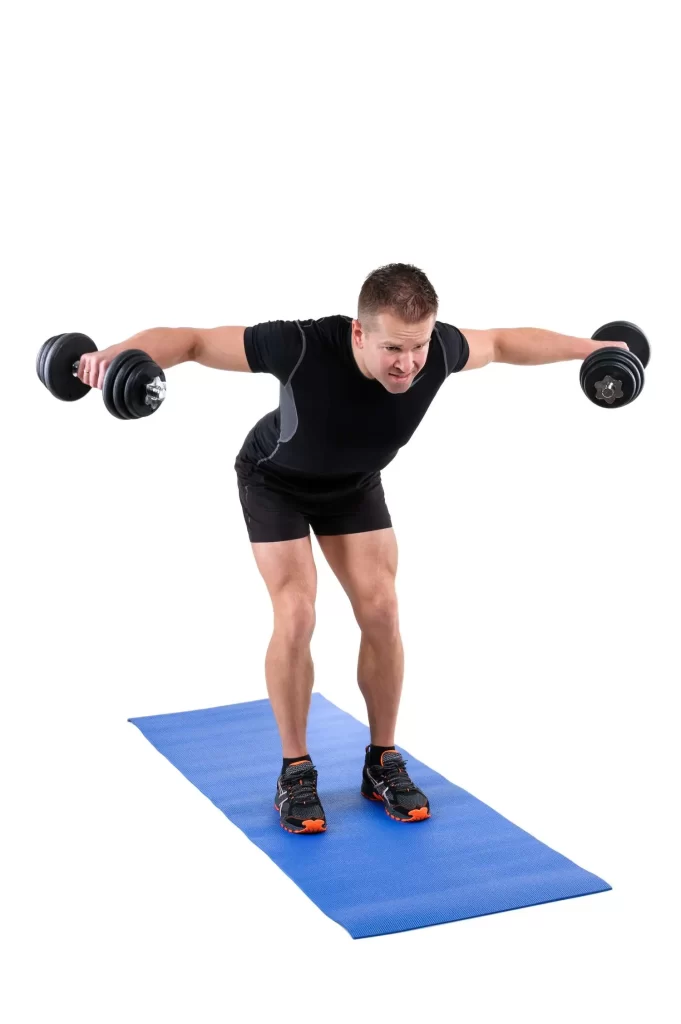
Reverse Dumbbell Fly
- Hold two dumbbells of mild to moderate weight and place them shoulder-width apart.
- Put yourself in a bent-over row position with your hips hinged at about a 45-degree angle and your knees slightly bent.
- Raise your arms laterally in place of rowing, as though you were performing the reverse motion of a chest fly.
- For lateral abduction, concentrate on squeezing your shoulder blades.
- As you continue, you should have some upper back strain.
Pull-ups: Neutral Grip or Chin-Ups
- Maintain a neutral or narrow grip to target the teres major and minor. Because a narrow or neutral grip maintains a more natural shoulder position, it will encourage more engagement of the back muscles. The lats are put under the most strain during standard wide-grip pull-ups.
Supinated Lat Pulldown
- Reach up and grasp the bar while seated on the bench. To properly target the teres major, hold the bar underhand and a little outside shoulder width.
- Pull the bar to your upper ribs while keeping your elbows taut and your shoulder blades back as you lean back a little.
- Stop at the bottom, squeeze, and then slowly go back to the beginning so that your teres major and lats may stretch.
Cable Pullover
- Feel a lat and teres major stretch as you grasp the attachment while hunching slightly at the hips and arching your spine.
- Squeeze your shoulder blades, brace your core, and bend your elbows slightly.
- Allow your upper body to raise a little as you draw the weight to your waist.
- At the bottom, squeeze your lats, hold for a moment, and then gently go back to the beginning.
- Concentrate on making deliberate, slow movements. To preserve your shoulders and prevent damage, start with a lesser weight.
Low Cable Row
- Place your feet on the footrests and bend your knees slightly while sitting on the cable machine.
- With your shoulders back, chest out, and back straight, hold the attachment with a small forward tilt.
- Pull the weight a little bit down and into your stomach to engage your teres major and upper back.
- Pinch your shoulder blades and keep your elbows in.
- Don’t use momentum. Return to the beginning position after stopping when the handle is near your belly button. Do it again.
Prevention of Teres Major Muscle Pain
Muscle pain prevention techniques are simple and require little to no equipment. You can avoid stress by implementing some of these practices immediately!
Adequate warm-up
- Do you ever catch yourself neglecting your cool-downs and warm-ups? This might be alluring since its significance is often disregarded or misinterpreted.
- Since injuries were predicated on the long-term effects of skipping a warm-up, the authors of this study contend that it is challenging to investigate the immediate impacts of skipping. According to the interpretation, if you are consistent with your warm-ups, you can effectively prevent injuries!
Proper posture
- Any muscle strain can be lessened by maintaining good posture. This ideally entails lowering and repositioning your shoulders. Your teres major and other muscles must work harder to stabilize your shoulder joint when you round your shoulders forward.
- Furthermore, a neutral spine might avoid the need for muscles to adjust, which could result in muscular imbalances.
Recovery time
- To prevent injuries, make sure you have adequate time to heal. This not only facilitates the healing of minor tears but also prepares your muscles for your subsequent exercise session. Muscle fatigue can be avoided and improved performance can result from getting enough sleep.
- Being active while taking the right measures is the key to avoiding any pain. Prioritizing a routine that suits you is what it means to schedule warm-ups and recuperation time, even though being attentive to your posture may call for some mindfulness!
Incorporate a stretching routine
- You’re in luck because BMS wrote a piece about 8 Teres Major Stretches That Work! You won’t regret it if you come over and give them a try! Additional helpful information regarding the teres major, provided by Sam Ayd, is also available.
Conclusion
Your teres major may have been strained if you have pain in the posterior shoulder region following a throw or repetitive arm motion. It can be adequately treated with the right measures. It turned out that after 18 days of cautious measures, a football player’s pain and limits had completely disappeared. Keep in mind that there are simple steps you may take to prevent this severe pain.
FAQs
What advantage does Teres Major offer?
The teres major’s primary job is to generate the humerus’ movements at the glenohumeral joint by pulling the humerus’ anterior surface medially in the direction of the trunk (internal rotation). Additionally, it can extend the arm from a flexed position.
When teres major is tight, what happens?
The teres major muscle should be kept in mind. The arm and shoulder movements depend on this little yet vital muscle. It might hurt and limit your range of motion if it is overly tight or overworked.
How long does it take for teres major to heal?
Any baseball player with a magnetic resonance imaging (MRI)–identified injury to the latissimus dorsi or teres major was included. Nonoperative treatment for all injured athletes aimed to get them back to throwing at full velocity three months after the injury.
What sign of teres major soreness is it?
A quick, severe pain in the shoulder, upper arm, and armpit is the primary sign of a teres major tear. This typically occurs when the muscle is not rested and no treatment is administered.
What causes teres major pain to flare up?
Where are the main trigger points for Teres? One trigger point is located where the latissimus dorsi and teres major muscles connect in the posterior axillary fold. Over the rear surface of the lower scapula is another trigger point.
How can my teres major be stretched?
Stretching the Teres Major Muscle
From a standing position, one of the best teres major stretches you can perform is to raise your arm to the opposite side (horizontal adduction), grasp your underarm with your other hand, and drive your arm upward and to the opposite side. Wait 30 seconds.
What is the purpose of teres major?
This premium cut is nothing short of a culinary marvel, usually weighing a hearty 8 to 12 ounces. With a softness that rivals the legendary beef tenderloin, it’s a steak lover’s paradise.
What kind of exercise is good for the teres major?
One of the best workouts for strengthening your teres major muscles is the lateral rise. Supporting lateral or external rotation of the arm at the shoulder joint is a critical function of the teres minor.
Is the teres major difficult?
The chuck part of beef, which is located just beneath the front leg, produces the somewhat uncommon teres major steak. It is comparable to the popular chuck roast, but the teres major is much softer. Though it rarely weighs more than 10 to 12 ounces, it is soft enough to be compared to tenderloin.
What is the sensation of a teres major pain?
The first step to a successful recovery is identifying the symptoms of a teres major strain: Sharp or dull pain around the shoulder or upper back.
How can teres major be stretched to relieve pain?
You might attempt a few simple stretches to help relax your teres major. If you’re seeking examples, social media and YouTube can be your best friends.
Here are a few well-known examples:
Stretching while standing overheadStretching the shoulders over the body pose of a child (with arms outstretched)
Your teres major would be stretched by the majority of mobility exercises that require shoulder and arm movement.
What is the average recovery time for a teres major pressure?
The interventions you can use will determine the solution to this inquiry. According to the study cited in this article, an injured athlete can recover from a severe major strain in as little as eighteen days. The severity of your injury has a significant impact on how quickly you recover.
How can teres pain be alleviated?
For relief, the acronym RICE is simple to memorize. Elevation, compression, rest, and ice! Over-the-counter drugs can also be helpful if your pain is chronic. It is advised that you contact the doctor to have a precise diagnosis and a customized treatment plan.
Why does teres major hurt?
Pain in the teres major muscle can be caused by trauma, injury, repetitive motions, high levels of stress, and bad posture. Throwing and batting are examples of repetitive overhead or shoulder-focused motions that might exacerbate teres major pain.
References
- Debutify. (2024, September 17). Root causes of Teres major pain (and how to fix it!). Back Muscle Solutions. https://backmusclesolutions.com/blogs/the-ql-blawg/teres-major-pain?srsltid=AfmBOooA0g3MKC-UnJj-Q35OqsCvC2JcVAWvlLrKhzLAm2NXlFIRBYGS
- Levarda, T. (2024, May 8). Acupuncture for Teres Major pain — Morningside Acupuncture NYC. Morningside Acupuncture NYC. https://www.morningsideacupuncturenyc.com/blog/acupuncture-for-teres-major-pain
- Debutify. (2024a, August 21). 11 BEST Teres Major and Minor Exercises. Back Muscle Solutions. https://backmusclesolutions.com/blogs/the-ql-blawg/teres-major-and-minor-exercises?srsltid=AfmBOor24VndCtEzfqWlrqOIf97iWM09XimL7OsB5lwnj4jzxeAmlkjx

